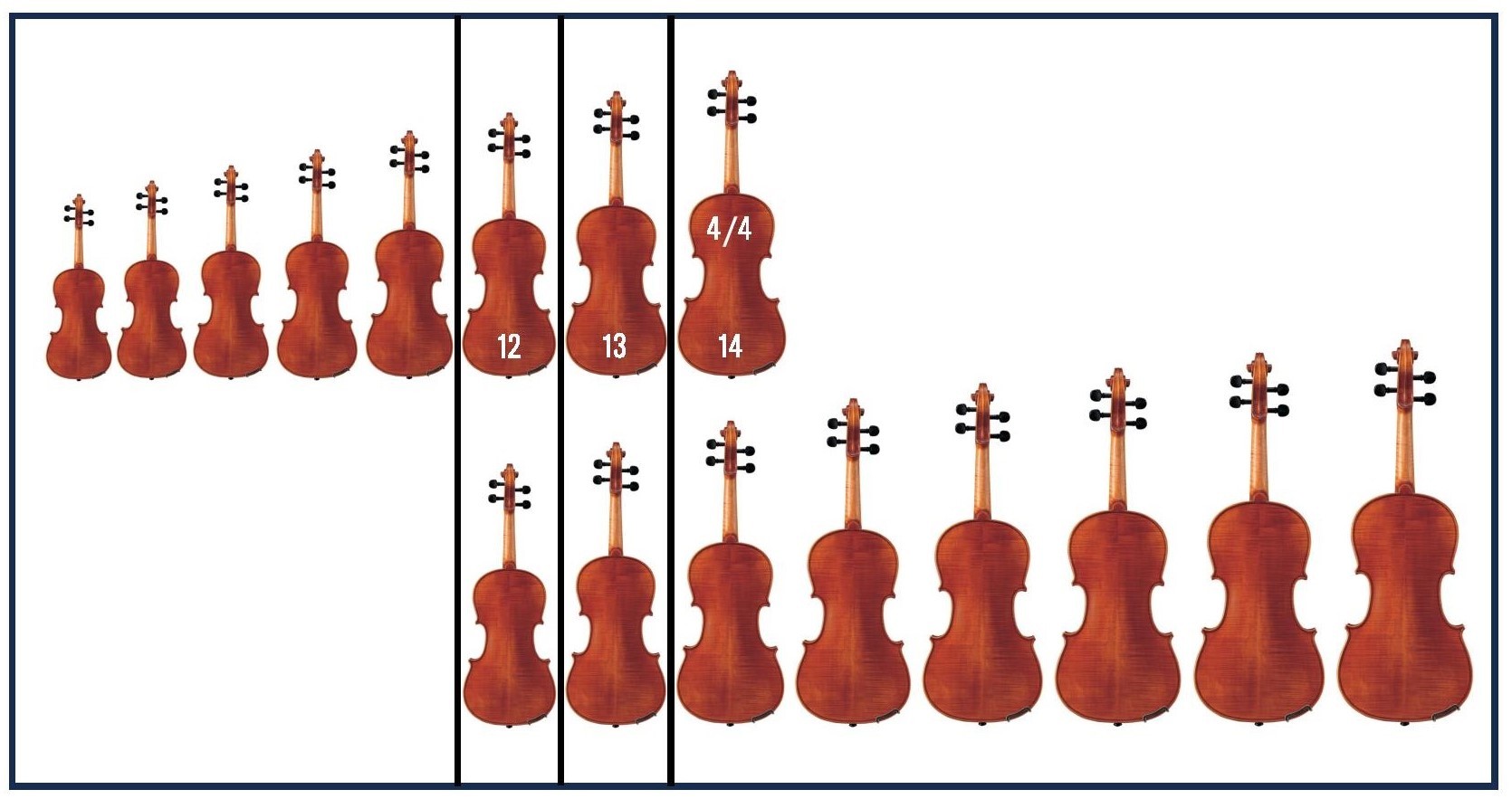The violin and viola are often confused due to their similar appearance. However, several key differences exist, not just in size but also in tone, construction, and even the bows used to play them. This article will explore these differences, focusing on the size comparison between a viola and a violin.
Viola vs. Violin: Size Differences
While a viola is generally larger than a violin, both instruments come in various sizes to accommodate players of different ages and physical characteristics. The size of a stringed instrument is measured from the bottom of the lower bout to the top of the upper bout, excluding the neck and scroll.
Violins are measured in fractions, ranging from 1/32 (7 inches) to 4/4 (14 inches), with 4/4 being considered “full size.” This smaller scale allows even very young children to begin learning.
Violas, on the other hand, are measured in inches, typically ranging from 12 to 18 inches. A 14-inch viola is the same length as a full-size (4/4) violin. However, a “full-size” viola generally refers to instruments between 15 and 16.5 inches, the most common size for adults. Despite the length similarity between a 14-inch viola and a 4/4 violin, the viola’s construction differs to produce its lower, richer tones.
Why Correct Instrument Size Matters
Choosing the correct instrument size is crucial for comfortable and effective playing. An instrument that is too small restricts a player’s ability to reach all the notes on the fingerboard. Conversely, an instrument that is too large can be uncomfortable and make it difficult to hit notes accurately. Consulting with a music instructor or a professional at a local music store is recommended to ensure proper instrument sizing.
Construction and Tone: Contributing to Size
The viola’s larger size is directly related to its unique construction and lower tone. Violas have wider and thicker ribs (sides) compared to violins. They may also have thicker front and back plates to enhance their resonant, warm tone.
The violin, tuned to E5, A4, D4, and G3, produces a brighter, sweeter sound, often carrying the melody in orchestral music. The viola, tuned a fifth lower (A4, D4, G3, and C3), provides a richer, darker tone, often playing harmony or countermelody. This difference in tuning and the viola’s larger resonating body contribute to its larger size.
Even the Bows Differ
Viola bows are generally longer and have a thicker tip than violin bows. A key distinguishing feature lies in the frog (the part at the bottom of the bow holding the horsehair). Violin bow frogs have a sharp, 90-degree angle at the back, while viola bow frogs have a more rounded back.
Conclusion: Size and Sound Go Hand-in-Hand
The viola’s larger size directly contributes to its deeper, warmer tone and its role as the alto voice in the string family. While a 14-inch viola matches the length of a full-size violin, the viola’s wider body, thicker wood, and lower tuning necessitate its overall larger dimensions. Understanding these differences is crucial for appreciating the unique contributions of both instruments to music.
